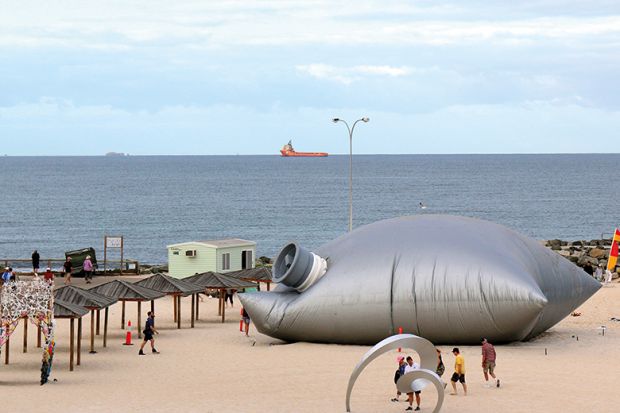Solid university surpluses seized on by the Australian government to justify its freezing of teaching grants were artificially inflated by ministers’ failed attempt to cut funds earlier this decade.
Figures in the most recent university financial report, which covers the 2016 calendar year, were boosted by a reconciliation of about A$200 million (£109 million) after the proposed savings failed to pass parliament.
The financial report was completed last October and released publicly in January, a month after the government announced that it would freeze university teaching funds at 2017 levels for at least two years.
The report showed that overall revenue to universities had increased by 5.4 per cent compared with 3.1 per cent the year before. Just four of the 39 publicly funded higher education institutions were in deficit, down from five a year earlier, with the sector collectively posting a A$1.56 billion surplus.
At the time, education minister Simon Birmingham said that universities had “generated a lot of revenue” and that the demand-driven admissions system had “allowed unis effectively to write their own cheque”.
But Times Higher Education can reveal that figures in the financial report were significantly affected by the fallout from the dropping of cuts, which were originally announced by Julia Gillard’s Labor government. These would have imposed a 2 per cent “efficiency dividend” on most grants to universities in 2014, followed by a further 1.25 per cent claw-back in 2015.
The cuts were applied to university payments during 2015 on the assumption that the measure would receive parliamentary approval. But the money was repaid to universities in mid 2016 following the legislation’s failure.
Consequently, teaching and scholarship grants mushroomed by 6.6 per cent in 2016 – more than double the average rise over the previous three years – adding almost A$500 million to universities’ coffers. The increase in teaching grants was more than triple the 1.8 per cent rise in domestic student numbers.
Mark Warburton, a former senior bureaucrat with the Department of Education and Training, said that the minister’s rhetoric about continuing “out-of-control” teaching grants did not match the actual underlying spending trend. Describing the reconciliation resulting from aborted cuts as an “anomaly”, he said the department’s annual reports showed that Commonwealth Grant Scheme payments had declined from A$6.96 billion in the 2015-16 financial year to A$6.93 billion in 2016-17.
“This decline is something that should already be on the radar of university chief financial officers,” said Mr Warburton, now a consultant and honorary fellow with the University of Melbourne’s LH Martin Institute. “Disentangling what is happening in university funding is extremely difficult, and [chief financial officers] will need to be on their game if they are not to get a rude shock.”
A Department of Education and Training spokesman said the latest estimates showed that funding for teaching, learning and research would increase by 8 per cent by 2021, while taxpayer-backed student loans would rise by 11 per cent. However, these estimates were contingent on universities maintaining their current enrolment patterns, which is unlikely following December’s funding freeze.
Register to continue
Why register?
- Registration is free and only takes a moment
- Once registered, you can read 3 articles a month
- Sign up for our newsletter
Subscribe
Or subscribe for unlimited access to:
- Unlimited access to news, views, insights & reviews
- Digital editions
- Digital access to THE’s university and college rankings analysis
Already registered or a current subscriber? Login








